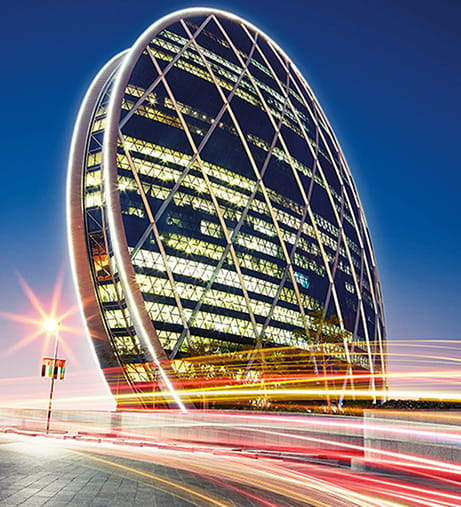#Featured
March 23, 2025
Explore Green Real Estate Living by Aldar
There is a growing trend toward real estate developments in green, forested areas. People are moving away from crowded cities and looking for homes that bring them closer to nature. These developments are designed to protect local ecosystems while offering a peaceful lifestyle.
Developers are now planning projects around natural landscapes instead of replacing them. This shift supports mental and physical well-being and helps protect biodiversity. Living in harmony with nature is becoming a strong selling point in modern property markets.
The Growing Appeal of Forest-Focused Living
Forest-focused communities are gaining popularity among buyers who want to live closer to nature. These spaces offer a calm alternative to crowded cities and appeal to those who value privacy, clean air, and outdoor access.
Real estate developments in such areas are becoming more desirable as they combine comfort with a natural setting that supports mental and physical well-being.
Health and Lifestyle Benefits of Living Among Trees
Living near trees can improve overall health and create a more balanced daily routine. Natural surroundings support healthier habits and offer protection from common stressors found in urban settings.
- Cleaner air helps reduce respiratory issues and improves long-term health.
- Lower stress levels are often reported in green environments, helping with focus and emotional balance.
- Reduced noise and light pollution contribute to better sleep and mental clarity.
- Accessible outdoor spaces encourage daily physical activity and family time.
- Proximity to nature is linked to better mood and stronger immunity.
Conservation in Real Estate Developments: Protecting Native Species and Ecosystems
Real estate developments in forested regions must be designed with environmental protection in mind. These areas often support rare or sensitive ecosystems, and responsible planning helps reduce long-term harm. Developers are taking steps to ensure construction aligns with conservation goals and protects natural resources from unnecessary disruption.
- Preserving tree cover supports biodiversity and stabilises local climate conditions.
- Using low-impact methods prevents damage to soil and nearby water sources.
- Wildlife corridors and buffer zones maintain access for animals and reduce habitat loss.
- Landscaping with native plants protects pollinators and reduces water consumption.
- Environmental planning identifies critical areas before construction begins.
How Developers Are Preserving Natural Landscapes
Developers working on forest-based real estate developments are increasingly focused on protecting the natural landscape. Instead of clearing land completely, they are finding ways to work around existing trees, terrain, and water sources.
This approach not only helps protect the environment but also adds long-term value to the community. By designing with the land, rather than against it, developers can create homes that feel more connected to nature.
Low-Impact Building Techniques in Real Estate Developments
Low-impact building techniques reduce harm to the environment during and after construction. These methods prioritise minimal disruption and long-term sustainability.
- Selective clearing removes only essential vegetation, preserving as much of the site as possible.
- Raised foundations or pier systems reduce soil disturbance and allow water flow beneath buildings.
- Natural grading avoids large-scale excavation and protects root systems.
- Permeable surfaces such as gravel or grass pavers reduce stormwater runoff.
- Construction waste recycling ensures that unused materials are repurposed instead of discarded.
These techniques protect the land and help developments blend into their surroundings.
Creating Seamless Transitions Between Built and Natural Environments
A key goal in forest-focused design is to ensure the built environment feels like an extension of nature. This creates a more calming and immersive experience for residents while also reducing the visual and physical impact of the buildings.
- Using natural materials like stone and timber helps homes feel more in tune with their surroundings.
- Outdoor living spaces such as decks and terraces extend into the landscape without disrupting it.
- Minimal fencing and hard boundaries allow wildlife to move freely and maintain ecological balance.
- Neutral colour palettes help buildings blend into the natural backdrop.
- Thoughtful site planning places homes to maximise views while preserving topography and vegetation
This design approach supports both visual harmony and ecological balance.
Enhancing Biodiversity Through Smart Design
Developers are also taking steps to increase biodiversity in and around new communities. This goes beyond avoiding damage; it involves actively improving the local environment. With smart design choices, they can support a wider variety of plant and animal life.
- Native plant gardens provide food and shelter for birds, insects, and small animals.
- Green corridors and wildlife pathways help animals travel between habitats.
- Water features attract pollinators and create microclimates for different species.
- Tree preservation efforts maintain mature ecosystems and reduce heat buildup.
- Pollinator-friendly landscapes support bees, butterflies, and other key species needed for plant life.
These efforts turn developments into part of the solution rather than part of the problem.
The Environmental Impact of Green Real Estate Developments
Real estate developments in forested and green areas have the potential to either damage or protect the environment. When planned responsibly, they can support long-term environmental goals by lowering emissions, improving local ecosystems, and reducing resource consumption.
Developers who focus on green building practices help ensure that these projects benefit both the residents and the surrounding natural habitat. The positive environmental impact of well-designed communities is becoming a key factor in planning and investment decisions.
Reducing Emissions and Energy Consumption in Real Estate Developments
Reducing emissions is a top priority in environmentally responsible design. By limiting the energy demand of each home, developers can significantly cut greenhouse gas output.
- Efficient building envelopes help reduce heating and cooling needs.
- Smart home technologies control lighting, HVAC, and energy use based on occupancy.
- Solar panels and renewable energy systems offset the use of fossil fuels.
- LED lighting and energy-efficient appliances lower electricity demand without reducing comfort.
- Compact, walkable layouts reduce reliance on cars and encourage low-carbon transportation..
These features work together to make communities less polluting and more sustainable.
Natural Cooling and Improved Air Quality
Natural design strategies can help regulate temperature and air quality without relying on mechanical systems. These approaches are especially useful in forested areas, where existing conditions support passive solutions.
- Shaded building placement reduces direct sun exposure and lowers cooling needs.
- Natural ventilation layouts improve airflow throughout the home and reduce indoor humidity.
- Vegetation buffers filter pollutants and cool the surrounding area.
- Green roofs and walls reduce heat gain and trap airborne particles.
- Low-emission interior materials improve indoor air quality and reduce health risks.
These strategies improve living comfort while lowering the environmental impact of the built space.
-
At The Wilds, the landscape shapes the lifestyle. Explore homes that prioritise natural light, outdoor connection, and eco-conscious features, perfect for those who believe sustainability starts at home.

